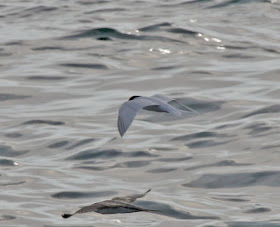

I noticed that some birds (the same ones judging by the nests they attended) were dragonfly specialists, and seemed to prey predominantly on Orthetrum sabina. Goodness knows where they find them all, or how the O. sabina population manages to maintain itself despite the daily harvest of what must be hundreds.

The only other dragonfly species I saw taken was Pantala flavescens. This is a really common dragonfly, flying in swarms over dry grassland. However, I only saw this one as a prey item once.

Other birds really were 'bee-eaters', while this one favoured wasps. I suppose that if a pair finds a particular source of food, like a wasps' nest, they will go back again and again for more.

Another Orthetrum sabina incoming.


I am quite disappointed by how noisy these images are - even at 400ISO.
I noticed a mist net had been set up near the bee-eater colony. At first I wasn't sure if it might have been put there by a researcher, but since it was in direct sunlight and no-one was attending it, I closed it. After driving away from the colony, something made me turn back to check on the mistnet again. When I returned a man was busy opening it again. When I approached him he ran off into the forest. I took this as an admission that he was using the net illegally, so confiscated the net and his poles. I can't imagine why anyone would want to catch bee-eaters, except for 'fun'.



Near the mangroves a flock of Germain's Swiftlets were hawking over the coastal bund in the low evening light. I found the autofocus coped pretty well in this situation, though, again, I found the images a bit noisier than I would have hoped. Check out the variability in appearance and depth of the tail notch. I think sometimes people underestimate how forked a Germain's tail can appear.All these birds seem to be in very fresh plumage.

I was pleased that the autofocus managed to track the birds (not always!) even when they flew in front of distracting elements in the background.

I don't think my 40D would have been able to focus on this fly-by Little Heron...

...or this subadult White-bellied Sea Eagle against the trees.

As I was watching the swiftlets near to dusk, I noticed a steady procession of green pigeons flying to roost in the mangroves. I turned my attention to them in the hope of seeing a Cinnamon-headed, but all were Pink-necked except for this Orange-breasted. Definitely worth another try though!

A Crested Serpent-Eagle in the gathering gloom.




























































